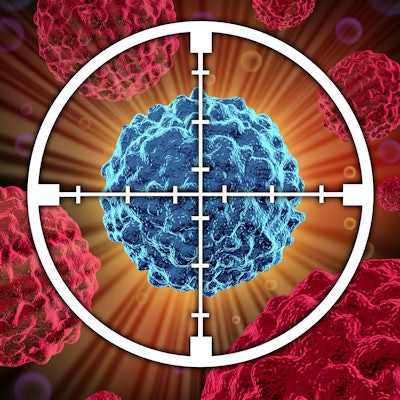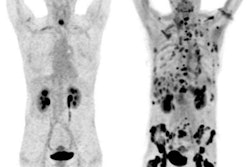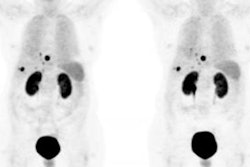
Patients undergoing personalized lutetium-177 (Lu-177) DOTATATE therapy for metastatic neuroendocrine tumors may soon be monitored in the comfort of their homes after treatment, thanks to a newly developed vest.
The user-friendly garment is designed to take readings for two minutes each day to ensure that the radiotracer is appropriately washed from the patient's kidney, liver, and spleen. The data also could reduce routine follow-up visits and allow clinicians to adjust therapy based on the patient's progress.
"The initial goals of this technology are to enable personalized Lu-177 DOTATATE therapies in the U.S. and to lower the cost for treatment personalization throughout the world," said lead author Robert Miyaoka, PhD, from the University of Washington's department of radiology, who presented details of the technology at the recent Society of Nuclear Medicine and Molecular Imaging (SNMMI) annual meeting. "Preliminary vest results from simulations are showing that at-home vest measurements made over seven to 21 days can provide organ-specific washout rates with precision as good as or better than the current accepted gold standard of three to four quantitative SPECT/CT images acquired over seven days."
Under current guidelines approved by the U.S. Food and Drug Administration (FDA), the standardized Lu-177 DOTATATE treatment protocol calls for four 200 mCi doses administered two months apart, regardless of the patient's size and weight. While this approach is safe for the majority of patients, the protocol is less than optimal for many patients.
European researchers take a different approach. They have found that tailoring the number of treatments based on limiting the dose and subsequent toxicity to a patient's organs at risk, such as the kidneys, liver, and spleen, can more than double the progression-free and overall survival rate for patients with neuroendocrine tumors undergoing Lu-177 DOTATATE therapy.
"Organ-specific dosimetry for Lu-177 DOTATATE is the norm at many medical centers outside of the U.S.," Miyaoka said. "Longitudinal imaging studies are conducted after each therapy treatment to determine the cumulative dose to the organs at risk for each patient."
The critical step is monitoring patients at home after treatment to ensure appropriate washout of the Lu-177 radiotracer from the organs without patients having to return to imaging centers to confirm the evacuation process. Hence, Miyaoka and colleagues developed a multidetector vest to follow the patient's progress at home.
Patients are first administered Lu-177 DOTATATE, then receive a SPECT/CT scan 24 hours later before putting on the vest for at-home monitoring. The vest features 15 to 20 small radiation detectors strategically placed within the unit based upon the patient's own anatomy. It also has a compact electronics pack designed to acquire the patient's data and transmit them through Wi-Fi or cellular services to a secure website where medical personnel and/or software can evaluate the information in near real-time.
 Maximum intensity projection shows relative positions of organs and tumors in the simulations with sample activity levels and plot of counts for 2D detector array (b). Red boxes represent detector positions that the algorithm selected for optimal dose estimation. The vest covers approximately 18 cm of the torso. Images courtesy of Miyaoka et al and SNMMI.
Maximum intensity projection shows relative positions of organs and tumors in the simulations with sample activity levels and plot of counts for 2D detector array (b). Red boxes represent detector positions that the algorithm selected for optimal dose estimation. The vest covers approximately 18 cm of the torso. Images courtesy of Miyaoka et al and SNMMI.Thus far, the researchers have performed simulation tests on vests with 15 sensors using acquisition times of two minutes. The trial found that activity in each object within the phantom appropriately decayed, and based on these results, the researchers determined the optimum time for monitoring with the vest.
"The patient will wear the vest for a two-minute data acquisition once a day for seven to 21 days," Miyaoka explained. "Based upon these at-home measurements and a single SPECT/CT image taken 24 hours after the therapy administration, organ-specific dosimetry will be determined for all of the patient's organs at risk."
With the collected information, clinicians then can further tailor the number of treatments based on personalized organ dosimetry information.




















